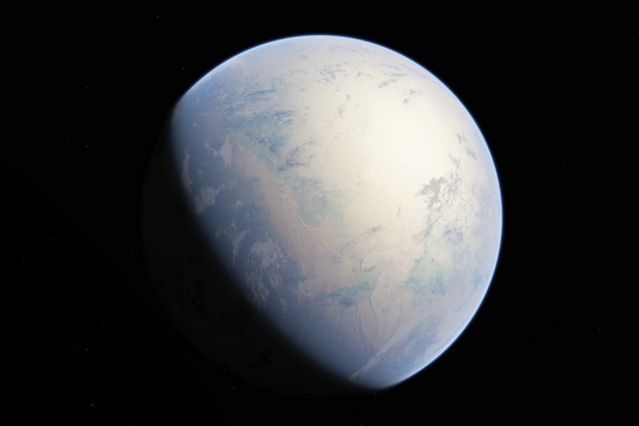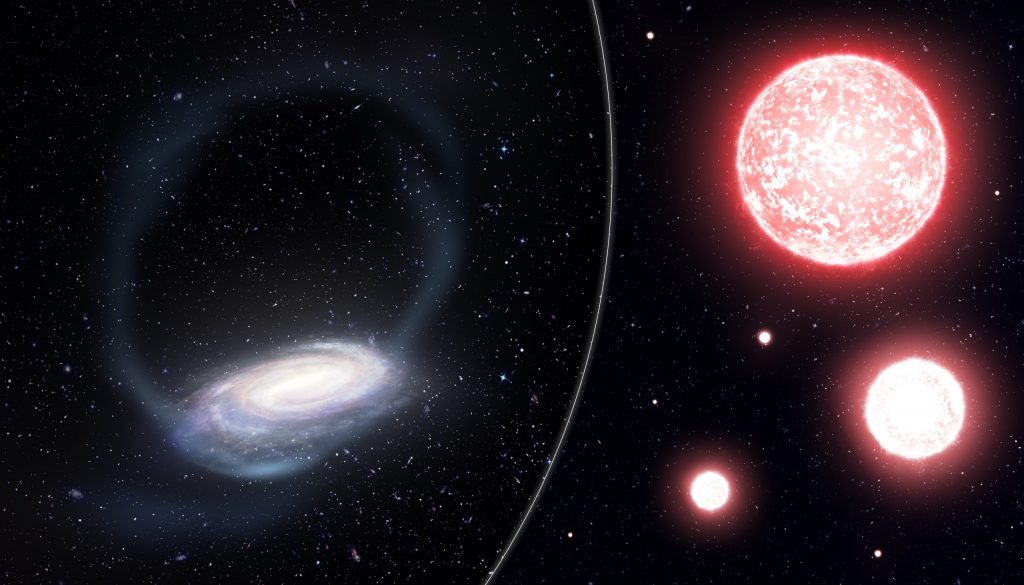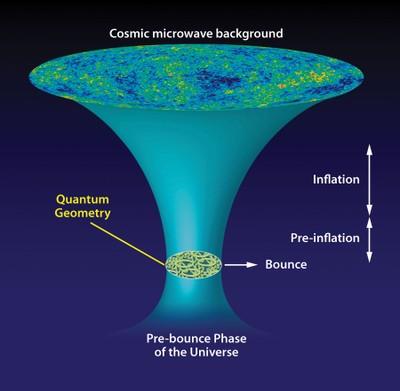Media
Transcript
It’s 2020, and it’s impossible to know what new terrible thing is going to make Murder Hornets and squirrels with the bubonic plague look normal. Showing us that things could indeed be worse is a new paper in the Proceedings of the Royal Society A by Constantin W. Arnscheidt and Daniel H. Rothman. These two Massachusetts Institute of Technology (MIT) researchers have shown that we are just one massive volcanic ash cloud away from global glaciation.

To those of you with Yellowstone, Katla, and Naples all erupting on your 2020 Bingo Card, you really don’t want that to happen. Now, to be fair, any one supervolcano or massive eruption probably can do in the climate, but widespread eruptions or some kind of biologically induced cloud formation could reflect enough sunlight back to space to bring back a terrible ice age.
It turns out that a sudden drop in the amount of sunlight hitting the surface of the Earth can cause the ice caps to expand, which sets up a feedback loop such that as the ice expands, it reflects more sunlight, further dropping the amount of energy warming our world, and thus allowing the ice to further expand, reflecting more light, and eventually turning our planet into a giant ice ball that is called a Snowball Earth.
This kind of global glaciation isn’t permanent. When ice covers the landscape, vegetation dies back, algae get iced under, and carbon dioxide is able to build up in the atmosphere until the greenhouse effect causes the Earth to warm up enough that the snow retreats and forests and grasslands can return. This has already happened multiple times in Earth’s past, and according to this new research, this phenomenon may be common to otherwise habitable worlds orbiting other stars.
For those keeping score, this means that life can die both by fire and ice even on a planet in a star’s habitable zone. We see how runaway greenhouse effects can ruin environments like that of Venus. This is a permanent death worlds can’t return from. We now understand how the global ice ages in our own history may have occurred, and we see in our own existence and in the fossil record that life can and does rebound after ice ages. It just may be different life than was around before the ice age.
This teaches us two really important things. First off, finding a world in a star’s habitable zone does not make it habitable. It could either be a greenhouse baked death world like Venus or a snowball like our Earth has periodically been. Second, while Robert Frost thought death by fire was something he might desire, I’d like to state, there is no coming back from that less-traveled path. Ice is nice – pick the ice.
We’ve said it before, and we’re going to say it over and over again in the future: The Universe is trying to kill us. Destruction exists at every size scale we can observe, and it is out of the carnage we see that we try to recreate an understanding of our universe’s past.
One of the more commonly destroyed structures in our galaxy are families of stars. From shredded dwarf galaxies to shredded globular clusters, every new star survey has found new streams of stars that were formed when tidal effects from our galaxy’s gravity stretched a system out into a thread of stars of similar compositions and motions.

A new paper in Nature, with lead author Zhen Wan, describes a newly discovered star stream. Found by the Southern Stellar Stream Spectroscopic Survey, or S5, this stream was identified through the careful study of stellar motions. Careful follow-up found that these stars also shared the same extremely low heavy element content. As a reminder, in astronomy, we have hydrogen, helium, and everything else, and in this case, these stars are mostly hydrogen and helium, indicating that the material in the stream had been enriched by a minimal number of supernovae before these stars formed. This stream is located in the direction of the Phoenix constellation, and when I say these stars have minimal heavy elements, I mean we have never seen a globular cluster this metal-poor.
It’s impossible to know if this stream of stars was originally a globular cluster or a dwarf spheroidal galaxy. These two kinds of systems can contain similar numbers of stars, and in rare cases, dwarf galaxies have a single epoch of star formation just like a globular cluster. In the paper, this team argues it is more likely that the progenitor to this stream was a globular cluster because they more often have the single star formation burst and metallicity seen in this stream and more consistently orbit in the direction of these stars.
If this was a globular cluster, it means we need to rethink the history of globular clusters, which we thought could only form after the universe had undergone a certain amount of enrichment and required more heavy elements than are seen here. That said, it could be something more like the Ursa Minor dwarf spheroidal galaxy, with a single epoch of star formation that pushed out all the gas and dust in the system, preventing future generations of star formation.
Given the choice between this being a rare object that was destroyed or a more common object that had to break the rules as we know them to form, I personally would have gone with the destroyed dwarf galaxy. Either way, this is a stream of stars with a less-complex makeup than we’ve ever seen before, and that is kind of awesome.
There are lots of times in science when more than one theory could explain what we are observing, and there aren’t always tests to determine which of the two theories matches reality.
Take gravity. We know Newtonian equations work at human scale velocities and masses. We know relativity works at extremely high masses and velocities. What we don’t know is if Space-Time is loopy or stringy at the smallest scales. While string theory so far hasn’t won anyone over with its testability, it has captured people’s imaginations thanks to popular books by Stephen Hawkings and Brian Green, among others.
The theory that has been trying to make predictions, however, is loop quantum cosmology. In a new paper in Physical Review Letters, a team led by Abhay Ashtekar is able to explain both the large-scale power spectrum’s anomaly at low values and the anomaly in lensing amplitude that shows inconsistency with Lambda-Cold Dark Matter cosmologies.

According to Ashtekar: The standard inflationary paradigm based on general relativity treats space-time as a smooth continuum. Consider a shirt that appears like a two-dimensional surface, but on closer inspection, you can see that it is woven by densely packed one-dimensional threads. In this way, the fabric of space-time is really woven by quantum threads. In accounting for these threads, loop quantum cosmology allows us to go beyond the continuum described by general relativity where Einstein’s physics breaks down—for example beyond the Big Bang.
This paper is the first to consistently explain both these known anomalies. Co-author Donghui Jeong adds: A recent study in the journal Nature Astronomy proposed an explanation for one of these anomalies that raised so many additional concerns, they flagged a ‘possible crisis in cosmology.’ Using quantum loop cosmology, however, we have resolved two of these anomalies naturally, avoiding that potential crisis.
In addition to solving these two known anomalies, this paper also makes new predictions about a fundamental cosmological parameter and primordial gravitational waves that might be tested by future, planned space missions.
This is not definitive proof that Loop Quantum Gravity is real or a nail in the coffin of string theory, but it is definitely a paper that made me sit up and take note. I now have a small hope that we’ll have a unifying theory that brings gravity into a quantum context, and sometimes, a small hope is enough.
Learn More
Plunge in Sunlight May Have Triggered “Snowball Earths”
- MIT press release
- “Routes to global glaciation,” Constantin W. Arnscheidt and Daniel H. Rothman, 2020 July 29, Proceedings of the Royal Society A
Scientists Find Remnant of Strange Dismembered Star Cluster at Galaxy’s Edge
- Carnegie Science news article
- Lowell Observatory press release
- “The Tidal Remnant of an Unusually Metal-poor Globular Cluster,” Zhen Wan et al., 2020 July 29, Nature
Cosmic Tango Between the Very Small and the Very Large
- Penn State Eberly College of Science press release
- “Alleviating the Tension in the Cosmic Microwave Background Using Planck-Scale Physics,” Abhay Ashtekar, Brajesh Gupt, Donghui Jeong, and V. Sreenath, 2020 July 29, Physical Review Letters (Preprint on arxiv.org)
Credits
Written by Pamela Gay
Hosted by Pamela Gay
Audio and Video Editing by Ally Pelphrey
Content Editing by Beth Johnson
Intro and Outro music by Kevin MacLeod, https://incompetech.com/music/


 We record most shows live, on Twitch. Follow us today to get alerts when we go live.
We record most shows live, on Twitch. Follow us today to get alerts when we go live.